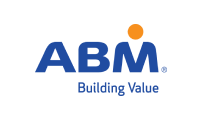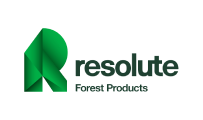The global business landscape is undergoing a profound transformation, primarily driven by sustainability imperatives. At the heart of this shift is the European Union’s Corporate Sustainability Reporting Directive (CSRD), a regulatory evolution that extends far beyond European borders. While the directive was initially designed to enhance transparency within the EU, its ripple effects are now being felt worldwide. This includes businesses in the Middle East, which must now reconsider their approach to sustainability reporting and corporate social responsibility (CSR) to stay competitive.
What Is the CSRD and Why Does It Matter?
The CSRD builds upon and significantly expands the earlier Non-Financial Reporting Directive (NFRD). Specifically, it mandates that thousands more companies—not only large public-interest firms but also smaller listed entities—disclose comprehensive information on environmental, social, and governance (ESG) matters. What sets the CSRD apart is its “double materiality” approach, which requires companies to report on both how sustainability issues impact their business performance and how their operations affect the environment and society.
For Middle Eastern companies, even those not directly based in the EU, the CSRD’s influence is difficult to ignore. Any business with an EU subsidiary or substantial economic ties to EU suppliers and customers may be required to comply with these stringent reporting standards. Consequently, the directive is reshaping the way Middle Eastern companies approach sustainability reporting, making it a matter of strategic importance.
Direct and Indirect Impacts on Middle Eastern Businesses
For Middle Eastern companies with subsidiaries or branches in the EU, compliance with CSRD requirements could become a necessity. The regulation is triggered at a group level if certain financial thresholds—such as a net turnover of over €150 million in the EU—are met. This means that even businesses with a strong regional focus may find themselves needing to adopt global reporting standards to maintain compliance and remain competitive.
Beyond direct compliance, the CSRD also influences Middle Eastern companies indirectly, particularly through value chain dynamics. EU businesses that fall under the CSRD will increasingly demand detailed sustainability information from their suppliers and business partners. As a result, even if a Middle Eastern company is not directly regulated by the CSRD, it may still need to provide robust ESG data to secure and retain business relationships with EU-based partners.
Moreover, the CSRD is setting a new global benchmark for transparency and accountability. Investors, customers, and stakeholders worldwide now expect higher standards of ESG reporting. Given this trend, Middle Eastern businesses could face mounting pressure to improve their sustainability disclosures, particularly in critical areas like greenhouse gas (GHG) emissions.
Bridging the Sustainability Reporting Gap
Recent studies highlight significant disparities in sustainability disclosures across different regions. For instance, while nearly 89% of the largest U.S. companies report direct (Scope 1) emissions, Middle Eastern companies lag considerably, with much lower disclosure rates for both direct and indirect (Scope 3) emissions. This gap underscores the urgent need for Middle Eastern businesses to invest in comprehensive data collection and transparent reporting systems. By doing so, they can meet both local expectations and international standards, thereby enhancing their credibility in global markets.
Insights from Corporate Social Responsibility in Saudi Arabia
A closer look at CSR literature in Saudi Arabia reveals that traditional determinants of CSR are evolving. Researchers emphasize that contextual characteristics—including unique cultural, economic, and regulatory factors—play a crucial role in shaping effective CSR disclosure. Therefore, for Middle Eastern businesses, adopting the CSRD is not merely about checking off regulatory requirements. Instead, it is about integrating global best practices with locally relevant strategies that resonate with stakeholders and drive sustainable growth.
Climate Tech Investment Trends and the CSRD Connection
In addition to evolving reporting requirements, the climate tech investment landscape is also shifting. Data from post-COP28 analyses indicate a global contraction in climate tech funding, with the Middle East witnessing a decline from a peak of US$5 billion to US$3.6 billion. However, despite this downturn, promising areas such as electric mobility and AI-driven climate solutions signal a maturing market with untapped potential.
For Middle Eastern companies, robust sustainability reporting under the CSRD can play a critical role in attracting investment. By providing greater transparency and reducing perceived risks, businesses can position themselves as attractive opportunities for investors. Nevertheless, funding gaps persist, particularly in high-impact sectors such as industrial manufacturing, agriculture, and the built environment—all of which contribute significantly to regional GHG emissions. Bridging these “carbon funding gaps” will require not only innovative financing solutions but also improved ESG disclosures that enhance investor confidence.
Navigating the New Landscape: Strategies for CSRD Readiness
To thrive in this rapidly evolving regulatory and business environment, Middle Eastern companies should consider implementing the following strategies:
- Invest in Data Infrastructure: Developing and enhancing systems for collecting and verifying ESG data is crucial. In particular, improving the tracking of indirect emissions and value chain impacts will be essential for meeting CSRD requirements and broader stakeholder expectations.
- Conduct Double Materiality Assessments: Evaluating both the financial implications of sustainability risks and the broader environmental and social impacts of business operations is at the core of the CSRD framework. Companies must integrate this dual approach into their reporting processes.
- Integrate Local Context with Global Standards: Leveraging insights from regional CSR studies—such as those focusing on Saudi Arabia—can help businesses develop reporting practices that are both globally aligned and locally relevant.
- Engage with Stakeholders: Establishing proactive communication channels with investors, supply chain partners, and customers will be key. Transparent ESG reporting can strengthen business relationships and open doors to new market opportunities.
- Explore Strategic Climate Tech Investments: As the region adjusts to shifting funding landscapes, targeted investments in underfunded yet high-impact sectors can position companies as sustainability leaders and innovators.
The EU’s Corporate Sustainability Reporting Directive is more than just a regulatory requirement; it serves as a catalyst for global change. For Middle Eastern businesses, the CSRD presents both challenges and opportunities. By embracing enhanced transparency and aligning with global ESG standards, companies in the region can secure vital business partnerships, attract investment, and contribute meaningfully to the worldwide transition toward sustainability.
Don’t miss the opportunity to gain crucial insights into CSRD compliance, ESG data collection, and double materiality assessments. Attend our upcoming MENA-Africa | Certified Sustainability (ESG) Practitioner Program, Advanced Edition, on March 11-12 & 13, and position your business for long-term success in the evolving sustainability landscape.







